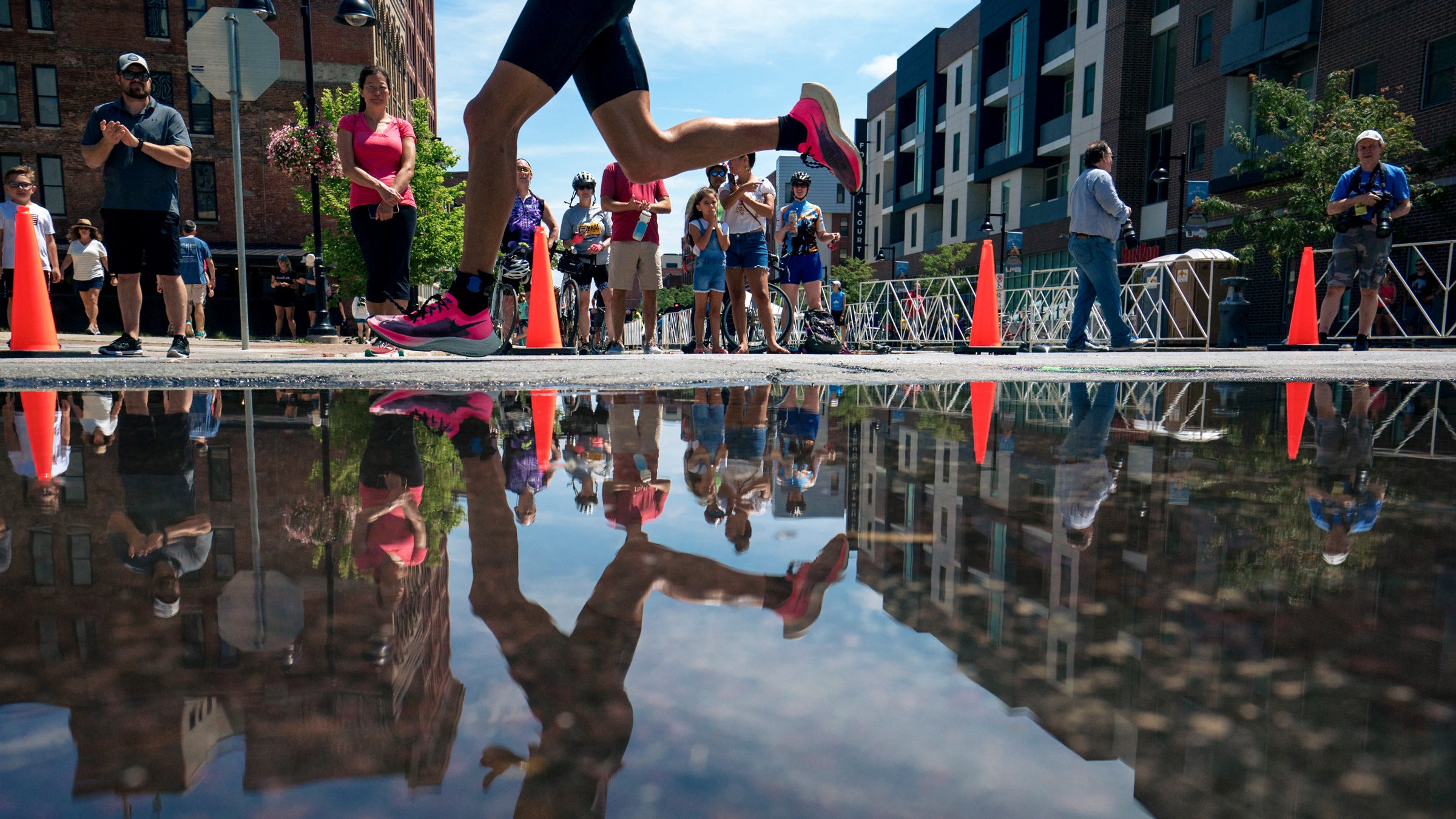Dear Coach: How Do I Adapt As I Return to Racing?

An athlete competes at 70.3 Des Moines. (Photo: Kyle Rivas/Getty Images for IRONMAN)
It might be a phrase you’ve heard a lot lately, but “the way we were is no longer the way we are” rings true in many ways now, especially as racing returns and we, as athletes, look to adapt as best we can. After a full year of complete disruption to our comfort zone, I want to challenge this idea of getting back to the way things were. COVID caused a huge number of disruptions to our “normal,” not just as athletes, of course, but in every aspect of life. The argument can be made that even though racing has started to return, we are charging forward in a way that is anything but what we remember as normal. Some of the way we used to “do life” will forever be changed, and it is becoming quite clear from an athletic/competitive standpoint that there is a separation between those who were able to find stability through change and those who still struggle with it, either by avoiding it, actively resisting it, or honestly waiting for their past normal world to remerge.
Participation results from the races that have successfully gone off this season, combined with athlete testimonials and race re-caps, have made a pretty clear case that in order to succeed and thrive in this new era of racing we must be able to adapt to the surroundings we are dealt and continue to move forward.
RELATED: What to Expect at You Return to Racing in 2021
Consider this example: When becoming a runner, your feet go through the process of being sore, dry, and often blistered from the ‘hot spots’ of constant use. Over time, your feet start to develop calluses over these hot spots so that they can better meet the demands they are put under. Instead of going to get pedicures to keep your feet smooth and soft, you ask the manicurist to leave those calluses alone and just focus on other areas that need some attention. Instead of trying to get your feet back to the way they were, you have arrived at some place new, with a different set of expectations for how your feet should look and feel in terms of performance. You have adapted your routine to meet the demands needed to become a runner.
The same principles apply when getting back to racing after a pandemic has altered our lives. Many athletes’ routines have to look different in terms of preparation to be able to get to the start line with the same fitness and confidence they had before. This may mean that instead of pool swims, they resort to dry land drills with resistance bands. Instead of visiting spin classes in gyms, they sit for hours on indoor trainers and use online platforms to virtually take classes or turn to technology like Zwift to keep the pedals turning. The usual morning workouts may have shifted to evenings, once the workday or children have been put to bed. The point here is that in order to get back to racing we have to be tough, determined, durable, and adaptable.
RELATED: How the Emotions You’re Feeling from the Pandemic Can Help You Become a Better Athlete
Is this an easy ask? Of course it’s not. Humans typically hate change. We desire consistency above anything else and want to get back to “normal” as quickly as possible. However, as the old saying goes, the only constant in life is change. If having to alter the way in which you’ve always done it makes you uncomfortable then rest assured: you’re not alone. But the honest reality is that if you have told yourself you are unable to swim/bike/run/lift until things are back to normal, those athletes who have already figured out how to adapt may be passing you by at your next race.
Tristen Rogers is a USAT Level 2 Coach, Head Coach of the HAT Altitude Team, and owner of HAT House Endurance Camps.